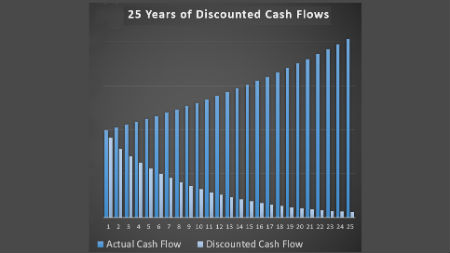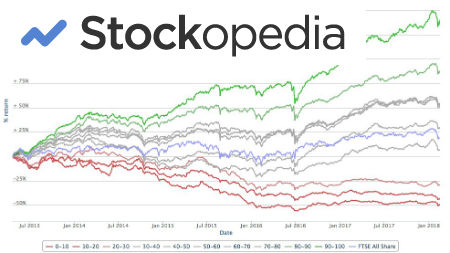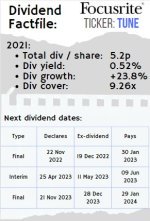
"Stocks For The Long Run" by Jeremy Siegel
"Stocks For The Long Run" by Jeremy Siegel is the book for you if you need a little convincing that stocks are the best asset class over a long period of time.
It's a terrific read, full of statistics backing up the fact that there is no better place to park your cash than the stock market as long as you are prepared to stomach big price volatility and you have a long investment horizon.
Siegel traces stock market returns back to 1802 and shows how stocks have performed over many different periods in that time. He shows that real (inflation adjusted) returns from a diversified portfolio of shares (effectively the index) has averaged 6.6% per year meaning that your purchasing power doubles almost every decade.
These real returns have been remarkably similar in the century of no inflation (the 19th century) and the century of significant inflation (the 20th century).
The whole point of investing is to increase your purchasing power.
There would be no point in locking away money if all it meant was you could buy the same number of Big Macs 20 years from now as today (at their then-inflated prices). You need to be able to buy MORE Big Macs in 20 years and this is reflected by increased purchasing power.
Here are the important lessons we took from "Stocks For The Long Run":
Lessons from "Stocks For The Long Run"
1) How to measure risk:
How you define and measure risk is very important for the investor. Siegel effectively shows that in the short run, stocks are very risky and you can (and will) get some very nasty price moves.
Siegel highlights that, in the long run, stocks are the LEAST risky asset. Stocks have been the best performing asset class in EVERY 30 year period analyzed.
Therefore, if you have a long time horizon, it would be very risky NOT to be in stocks.
As an individual investor you can have a huge advantage over the professionals because you can afford to take a much longer term view.
Professional investors (such as fund managers) are typically measured on a year to year basis and, as Siegel shows, year to year returns in the stock market are very volatile.
As a long term investor, you can afford to be much more patient, allowing you to sit through the volatile times and therefore not be tempted into selling at silly times.
|
This reminds me of another great investor, Phil Carret, who when asked about the most important thing he has learned about investing for the last three quarters of a century answered in a word "patience". You can see a clip of his interview here: |
|
2) Myths of economic growth and returns:
When you ask people where they are investing, they'll often answer that they need to be in high growth sectors or high growth countries.
Logically this makes sense as, naturally, an investor you want to see growth and feel this should be reflected in your returns.
Siegel shows in "Stocks For The Long Run" that, surprisingly, these high growth sectors or markets do not provide the highest returns for the investor. There are two main reasons he points to for this being the case.
1. High growth sectors or countries tend to have very high valuations which automatically "prices in" that growth and often leads to overvaluation. This lowers future returns below the average.
2. High growth economies or sectors often need to issue a lot of new stock to feed this growth. This leads to more and more capital (and attention) pouring into these sectors which can dilute existing holders of capital and lower returns.
EVIDENCE: Which stock produced the greatest return in the S&P 500 from 1957-2012?
The answer - surprisingly - is tobacco company Philip Morris. And it did this despite a large drop in the number of smokers in the developed world since 1957.
In 1957, nearly half of US adults were smokers but by 2012 it was less than 20%. Surely you would think this is bad for a leading tobacco company.
Yet it has produced outstanding returns. The reason for this is simple. Philip Morris is a company with pricing power (they can raise prices easily), they haven't had to invest in their product (so cash goes back to shareholders not R&D expenditure), and there is no chance of new competition (try setting up a new tobacco company yourself!).
This has meant little capital coming into the sector, very high barriers to entry, and (due to concerns about a declining industry), valuations remaining largely staying reasonable. Philip Morris' average annual return from 1957-2012 was 19.57%.
"Stocks For The Long Run" takes you through this example in depth.
3) The importance of going global:
According to Siegel, US markets constitute less than half of the world's total equity. Why restrict yourself to one country when you can invest all over the world. Some of the best companies (for example {Unilever}, Diageo, Nestle, and Sanofi) are based outside the US.
You may think to yourself that the US has been the best place for returns. Not so, according to Siegel, who traced total dollar return in several developed countries and showed returns from 1900-2012 were higher is Sweden, Australia, and South Africa than in the US.
Many other countries (such as Denmark, New Zealand, Canada, UK, and Switzerland) had dollar returns very close to US returns over that 112 year period. Siegel argues in "Stocks For The Long Run" that foreign markets have never been more accessible for domestic investors and opens up a huge pool of opportunities. There is no need to just analyze the local opportunities!
4) Knowing where shareholder value comes from and how to outperform the market:
Siegel devotes a whole chapter of "Stocks For The Long Run" to the sources of shareholder value and where your long term returns are going to come from. We think it is very important to have a strong understanding of how returns are generated and how the value of both current and future dividends is key to valuing stock.
This doesn't mean that if a company doesn't pay a dividend then it shouldn't have value. What is important is a company's ABILITY to pay a dividend. For example, Berkshire Hathaway has famously not paid a dividend since 1968 but its ability to pay a dividend (earning power) has gone up enormously since then so the company is, rightly, valued far higher.
Understanding the sources of shareholder value helps you in your ability to value the underlying stock and understand how a company's actions will add to (or reduce) future value for you. This should help you in the ongoing monitoring of your portfolio.
5) The importance of behavioral finance and the psychology of investing:
The stock market can be a very dangerous place. "Stocks For The Long Run" has a chapter on behavioral finance and how you can avoid common mistakes. It is easy to forget that the stock market dropped my nearly 90% between 1929 and 1932. As recently as 1973-74, the UK market dropped by almost 75%. Despite these large drops, the 20th century was a wonderful century for stock market returns and it is important for you to understand that the market (and the headlines) will be volatile.
If you invest for a long period of time, it is inevitable you will see large drops, scary headlines, biases, over-confidence and bubbles. Your job is to try and recognize these risks and avoid the temptation to take actions that won't make sense in the long term.
Of course, it is far easier said than done and is always "obvious" in hindsight.
We urge you to focus on the underlying businesses you own and consistently try to purchase good quality profits at reasonable prices. If you don't spend a lot of time studying the market and opportunities, then consistent purchases of the market (like the S&P 500) through an index tracker or {ETF} should serve you well over long periods of time.
And finally...
|
|
As someone who has always invested in property, I'd have liked to have seen more of a comparison between stocks and real estate in "Stocks For The Long Run". We can see that from the book that stocks have been a great investment over the long term, but so has property. Real estate also has the benefit of leverage through mortgage finance. |
|
There are also parts of the book that we think are very interesting much shouldn't really be relevant to the investor. For example, Siegel spends a long time discussing the seasonal performances of stocks and technical analysis. In our opinion, whether you buy a stock in January or October should not be important for a long term investor focusing on the underlying fundamentals. |
|
Don't let these little complaints put you off, though!
All in all, "Stocks For The Long Run" is a fascinating book that makes a great read for anyone interested in the general stock market and its ability to generate wealth for you.
We hope you enjoy it!
Got a BURNING dividend question for 6-figure dividend earner Mike Roberts?
What is it that you really want to know about investing?
Submit a query and Mike will write a page in response.
PLEASE NOTE - in accordance with our terms of use, responses are meant for education / interest only. We do not give specific financial advice.



